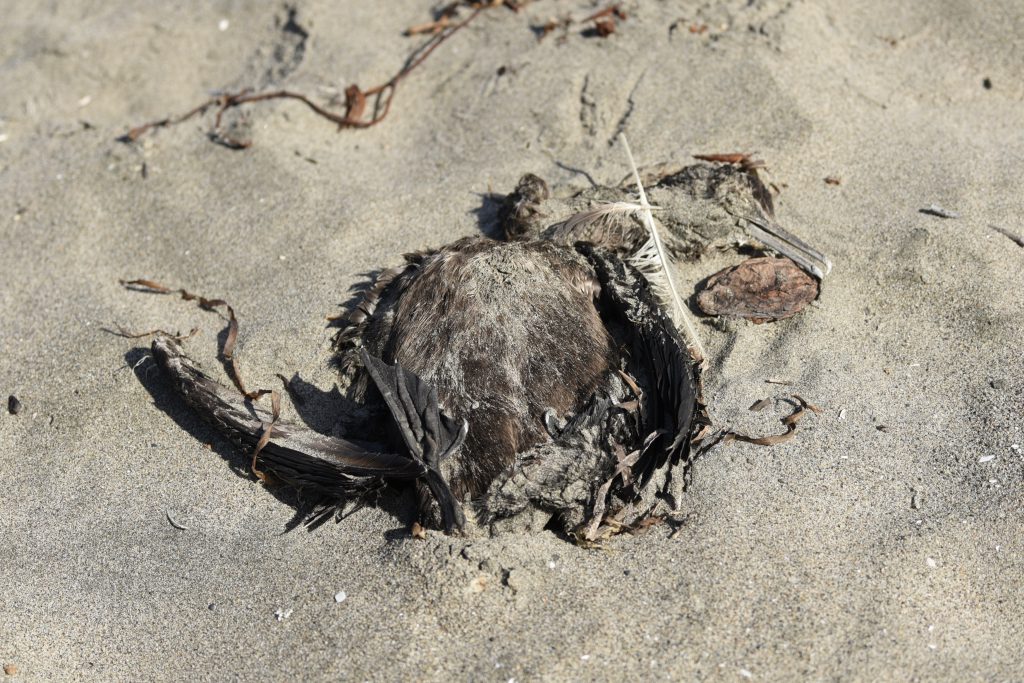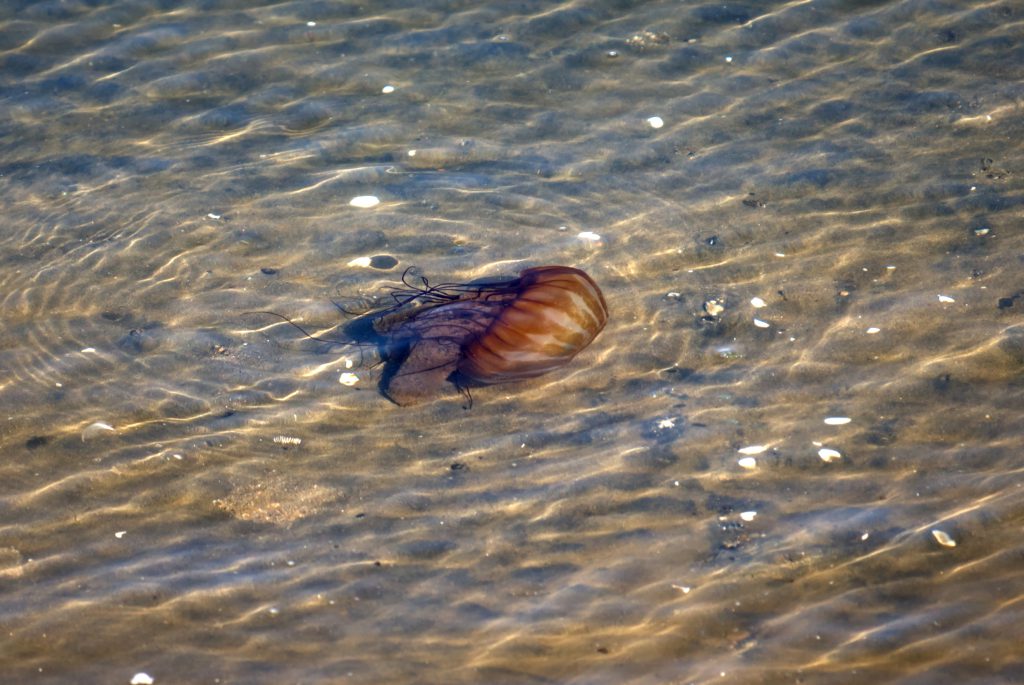Sometimes dead things can be very informative. Not in the same way as their living counterparts, of course, but there are times when observing a dead specimen reveals details that cannot easily be discerned when the creature is alive. For example, most living birds don’t let you get a close look at their feet. Dead birds, on the other hand, don’t complain and try to maim you when you spread their toes and look for webbing. What does webbing have to do with anything? It tells you whether and how a bird swims, of course.
Cormorants are fish-eating predators. Like their relatives, pelicans, they do plunge-dive from the air into the water. However, cormorants are much more streamlined than pelicans and also chase their prey underwater. A bird locomoting in water has two options for propulsion–it can use its wings to “fly” underwater or use its feet to paddle along.

2019-10-30
© Allison J. Gong
Take a look at the foot on that dead cormorant. It is clearly webbed, eminently suitable for a bird that uses its feet to swim underwater. The location of the feet also has functional significance. Note how far back they are on the bird’s body. Obviously this helps increase the overall streamlining of the body. Now think about how submarines move through water: the prop of a submarine is also positioned on the back of the boat. That’s probably not a coincidence.
Any trip to the beach brings opportunities to see creatures that have washed up. Or are in the process of washing up. Sometimes even (relatively) large animals end up beached. The big scyphozoan medusae, for example, have little control over where the currents take them, and find themselves in shallow water close to shore.

2019-10-30
© Allison J. Gong
Animals made of jelly do not fare well when they encounter land. There were several of these dinner-plate-sized jellies drifting and pulsing lazily in very shallow water. A few had been left stranded by the receding tide and were already drying up. Even the ones that were still alive would probably never get back to deeper water. Fortunately for them, they are blissfully unaware of their imminent demise–sometimes lacking a centralized nervous system with its all-knowing brain would be a blessing.
Death, of course, is a part of life and a very important part of nature. Even knowing that, it can be disturbing to see dead animals washed up on the beach. For most people, the shells and whatnot of invertebrates don’t seem to count as dead things, but everybody recognizes a dead bird. And there is a natural human tendency to feel sorrier for things that are more like us. From a biologist’s perspective, keeping track of dead animals on beaches can give us a lot of information about conditions in the sea. There is a sort of standard death rate, but deviations above what is considered normal may signify that something is going on. There are volunteers who make monthly patrols along beaches in the Monterey Bay Area, collecting data on the various carcasses that wash up. These data are used to evaluate the overall health of the waters within the Monterey Bay National Marine Sanctuary. Knowing about dead things can teach us about what’s going on with the living things.

Thanks for another insightful essay!